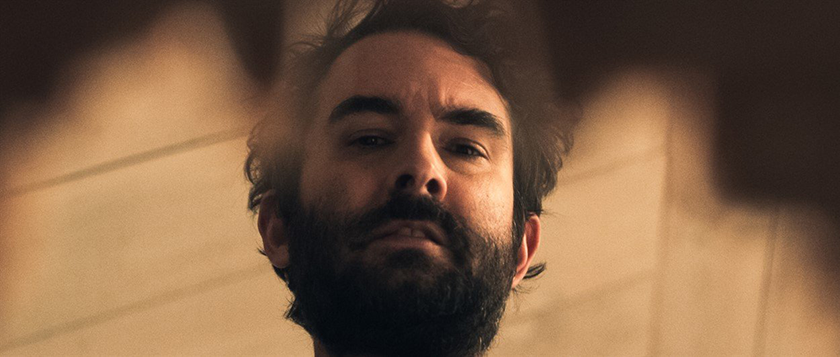Embracing the rough lo-fi style of the mumblecore movement, Ghostwritten tells the familiar story of a writer going insane in an isolated cabin.
For a writer, the peace and solitude of the countryside may seem like the ideal medicine to get over that pesky writer’s block and finish the novel. Yet, to say this situation never turns out well in the movies would be an understatement. The horror genre, in particular, is chock full of movies with this exact set-up, from The Shining to I Spit on Your Grave to The Presence to Hush. The isolation of the setting forces the writer to contend with trauma and demons they would otherwise be able to ignore, no one around to hear the scream when danger arises, and the inherent eeriness of the quiet and negative space surrounding a secluded country house.
Ghostwritten, directed by Thomas Matthews, is a new entry in the Writer Goes to Isolated Country House line, taking inspiration from the myth of Faust for its story of creative impotence and paranoia. Filmmaker and actor Jay Duplass (Pink Wall) stars as Guy Laury, a bitter, nebbishy writer crumbling under the pressure of following his successful first novel. When he is offered the opportunity to take a residency on the Island of Nantucket he jumps at the chance, hopeful that he will be able to get away from his problems. No sooner has Laury arrived in a small Nantucket town than he discovers the manuscript of a completed novel under the floorboards of his cabin. As Laury tries to decide whether to try to pass off the manuscript as his own or not, he begins to see frightening, gruesome visions around the cabin, and discovers the town is crawling with reported hauntings.
While Ghostwritten arrives about a decade too late to be a proper member of the group, the style of the movie places it firmly within the mumblecore film movement. The spiritual connection to the movement of the mid 2000’s is seen not only in the appearance of Duplass and Kate Lyn Sheil, two figures of the movement, but in its black and white handheld cinematography, natural settings and lighting, rough-edged aesthetic, and embrace of its low-budget trappings.

Rather than feel impeded by its low budget, Ghostwritten makes a valiant attempt to turn it into an advantage. With help from its cinematography and sound design, Ghostwritten is able to create and maintain an eerie, unsettling atmosphere. With very little dialogue throughout the movie its story is told through visuals. The digital cinematography is purposefully ugly, rather similiar to David Lynch’s Inland Empire, frequently so close to the actor’s faces or objects that the image is distorted and made grotesque. Ghostwritten makes the viewer squirm in their seat, not jump.
Duplass and the other performers all speak in a stilted manner, as though these are the first words they have ever spoken, and their faces are blank and unreactive. The weird, off-kilter quality of the performances is similar to that found in the work of David Lynch, such as Twin Peaks and Inland Empire. The uniform alienness of the performances helps Ghostwritten to create its own ecosystem, a world that exists wholly within the movie. Ghostwritten is a nightmare, and just like a nightmare, action and dialogue follow their own logic.
As the movie progresses, Laury becomes more and more lost in his own head. Others stop by his cabin or sit down beside him at the town pub, but there’s no telling how many are human beings, how many are ghosts and how many are imagined by Laury. Ghostwritten traps the viewer inside of Laury’s mind, and finds that it’s more scary than a ghost. Except for one sequence, the weakest of the movie, the filmmakers of Ghostwritten avoid cheap scares, and display the patience and vision to find something deeper.
Ghostwritten will be available to watch on demand from February 9, 2024.

